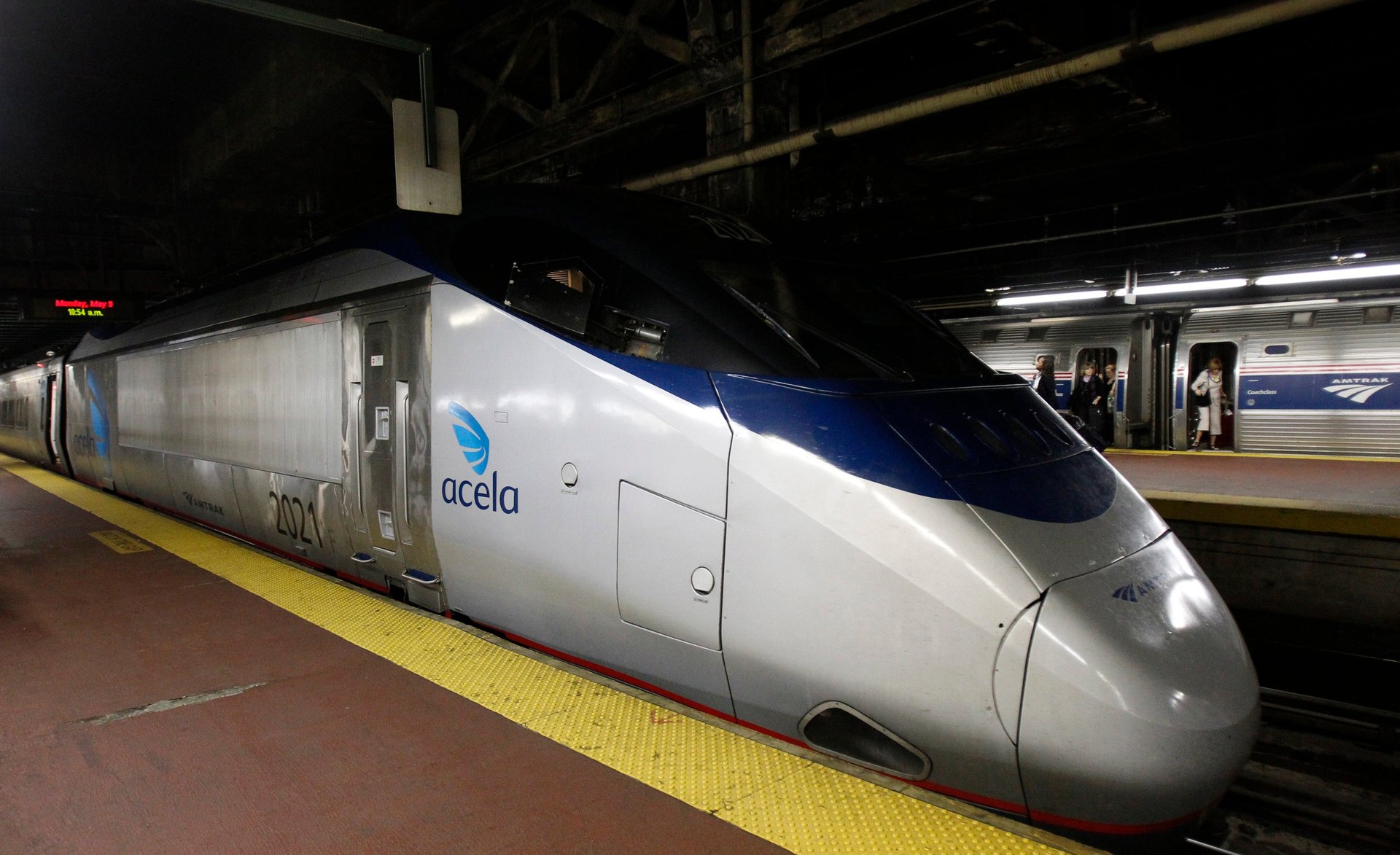Florida's $5 billion new Brightline route is a big push for US investment in high-speed rail
Private companies like Microsoft are backing high-speed transit projects, which will also rely on public funds

Brightline, the first new private passenger rail service in the US in a century when it started service in 2018, is about to make its inaugural high-speed journey between Miami and Orlando on Sept. 22. The rail service has been operating in Florida since 2018, but the new route connects the US state’s two biggest tourist hubs and will see trains reach up to 125 mph (200 kph) on the 3.5-hour, 235-mile (378-kilometer) trip. It marks another step forward for the US’s high-speed rail network—which lags far behind those in countries like China, Japan, and Spain—and has faced setbacks in the past decade due to a lack of funding. But progress is finally on the horizon. Probably.
Suggested Reading
While the publicly funded Acela has been in operation since 2000 in the American Northeast and reaches up to 150 mph (240 kph) for a brief part of its journey, private high-speed rail is still picking up steam with the intent to overtake. Brightline’s new route in Florida is a $5 billion project backed by Fortress Investment Group. The private equity firm has also funded a similar project in California and Nevada, Brightline West, which is slated to break ground later this year and will take an estimated four years of construction to complete, pending federal grant money.
Related Content
Another project, Texas Central Railway, is underway in the Lone Star state, and secured $75 million in private backing from in-state funders in 2015. Its goal is to connect Houston to Dallas in under 90 minutes, though getting the permission to build on private land is proving a stumbling block, and the project is still awaiting federal funding, placing it behind the curve compared to other projects.
Tech giants are also pitching in. Microsoft has spent around $1 million to back research for Cascadia Rail, a proposed train line running through major cities in the Pacific Northwest. The company’s headquarters are located just outside Seattle, and improved transit is a means to draw talent to the area.
Billions in US public funding has been set aside for high-speed rail projects
None of these projects could get off the ground without public funding. The Infrastructure Investment and Jobs Act (IIJA), passed under the Biden administration, is key to unlocking money for high-speed rail projects. Passed in November 2021, the act earmarked $66 billion to fund rail projects, representing the largest public commitment to train infrastructure since Amtrak, which is owned by the federal government, was founded in 1971.
The policy established the Federal-State Partnership for Intercity Passenger Rail Grant Program (FSP) to fund projects that “reduce the state of good repair backlog, improve performance, or expand or establish new intercity passenger rail service, including privately operated intercity passenger rail service.”
Brightline West, which has received a $25 million through a Rebuilding American Infrastructure with Sustainability and Equity (RAISE) grant, also applied for a further $3.75 billion through a FSP pot of money allocated to national projects (there’s also a specific fund for projects in the Northeast corridor). Texas Central, in partnership with Amtrak, applied for FSP funding in August to study the feasibility of its project, and is currently seeking a total $12 billion in federal loans to cover the project’s $30 billion price tag, as the Washington Post reported. Washington state has also applied for $198.1 million (pdf) in funding from FSP and from the Corridor Identification and Development program for the Cascadia Rail project.
One more thing: Gen Z dreams of an interconnected high-speed rail network
Growing up in a US with limited public transportation, the concept of a high-speed rail network connecting the country is popular among Gen Z, a generation that has relatively lower rates of driver’s licenses, and a high level of interest in sustainable mobility.
One tweet demonstrates the zeal the generation has for better national transit. In 2020, X (formerly Twitter) user @thisiscaramore tweeted an image of a conceptual high-speed rail map, captioned with the words “I want her so fucking much.” The tweet went viral, and continues to circulate in online spaces as a left-wing policy ideal, as Vox reported.
The pace of high-speed rail development in the US has been slow. But according to current timelines for high-speed rail projects in development, most of which are slated to be complete by the end of the decade, Gen Z could soon see a version of this fictional map become reality.
